Curiosity and Adaptability. Necessities for dance. And life.
Curiosity
I’ve taken yoga off-and-on for several years now. This past year, I’ve taken less off and more on—I’m in class at least a couple times a week at the local yoga studio (Solaluna). Earlier this summer, I decided to take a yoga intensive—approximately 5 hours of yoga a day for a week.
What I realized in the intensive is, the teacher, Eric, excels because he’s taken the time to explore—to try things, figure things out, deconstruct the forms and the science and concepts behind them, and then recomposed a method to teach yoga from a place of comprehension and continual learning (for himself) and the students. He doesn’t tell students what to do, but rather, explains the underlying ideas and encourages us to experiment to clarify those ideas in our own practice.
Going to yoga class isn’t enough for me anymore; I want to figure it out. I go home and figure out what’s working and what’s not, how it’s working, and how it all works in my body. It challenges me. And then I apply it to flamenco (because everything in my life, of course, revolves around flamenco.)
Curiosity drives the need to deconstruct and find the underlying concepts.
I realized that’s what I did in flamenco as soon as I started studying it, and something I still continue to do. Growing up, I would get home from flamenco class and immediately practice what I had learned, analyzing how the steps worked. I wanted to make them my own, but I also wanted to understand them. I found ways to be in a studio space for hours on end—not do indulge or drill, but above all, to take all the steps apart. To figure out how they worked, how I could make steps work better on my own body. What really drives practicing for me is curiosity. How did that step go? How does that work anatomically? Can I do this more efficiently? More expressively?
And curiosity leads to new movement. What if I try X? What if I do X? Go for it. You’ll never know if you don’t see what’s possible…Another reminder to myself that the only guarantee of failure is not trying at all. The only guarantee of growth; letting curious guide experimentation with conscious reflection.
Maybe curiosity killed the cat, but it makes smarter dancers. Good dancers imitate, great dancers explore, question, find the concept behind the movement being manifest—they understand the movement. And then, they can create their approach, express themselves more clearly.
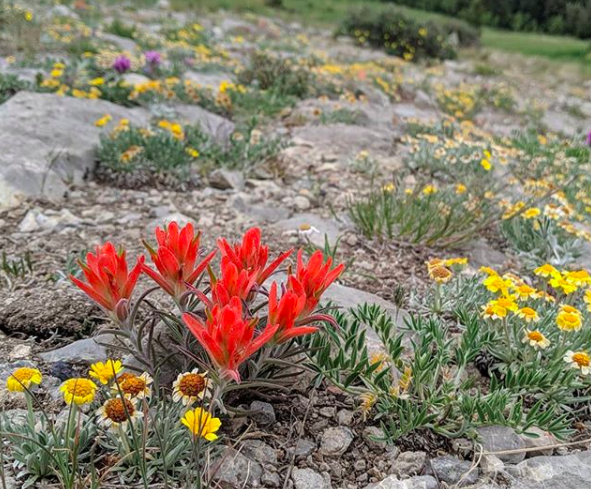
And, curiosity leads to a sense of wonder…flowers growing in rocky terrain at the top of the Sandia Mountains.
Taking a Limón Technique class the other day, the instructor started by saying that the exercises are for us to find our own truth in them. That there are many manifestations of Limón Technique, but the underlying concepts remain the same. And no one except ourselves can know if we’re fully contracted, fully resisting gravity, sustaining as much as possible, etc. We have to explore in it for ourselves. All these dance techniques and methods are guides for discovering movement concepts. They cannot just be repeated mindlessly to be understood.
Though having time and space helps in these explorations, I don’t always have time for long yoga sessions. So, I do the breathing exercises while I go on a walk, while I drive…Sometimes it’s hard to make time for a new practice. When I started flamenco, it was here and there—in the hallway by the front door where there was a small mirror, or at the grocery store. I encourage students to practice their footwork while they wait in line. We don’t have to make time or space, just use the time and space already there.
Curiosity has been such a part of my flamenco and contemporary dance practice, I didn’t realize I had been lacking it in yoga—doing the poses, thinking about them in class, but never taking the time to explore on my own. It’s a reminder for me to be an explorer. To not accept what’s been told to me and repeat it, but to dig in deep and see what it means to me.
Talking with a friend from yoga and a woman who started taking my flamenco classes:
I mentioned how I see a lot of parallels between yoga and flamenco—mainly in the mechanics, and she agreed. She then added that in both, you are really in charge. In yoga, if you get injured, it’s your fault. You are the one in control, and you can’t simply do what you’re told, like we’re used to doing in society. She said we need to carry that critical thinking necessary in yoga and flamenco into society and our culture. Curiosity is a little rebellious, and a lot flamenco.
Adaptability
Talking to my significant other, we were discussing what common sense is. And he mentioned adaptability. I hadn’t thought of that before. I think of adaptability as professionalism, yes. But perhaps that is one of the fundamentals of common sense; to be able to work with what you have, make something less than ideal work. (And that takes creativity too).
Attending one of my favorite local dance company’s shows this weekend (Groundworks Dance), in an outdoor space with little air flow on one of the hottest weekends yet this year, with a rock concert going on in the larger performance space just beside theirs in the park. And yet, the show went on. The performers worked with what they had. It is so rare that things go perfectly. Professionalism means you put on a professional quality show, even when circumstances are not ideal. The dancers’ expressive capacity and the stellar choreography made me forget about the background noise and the heat.
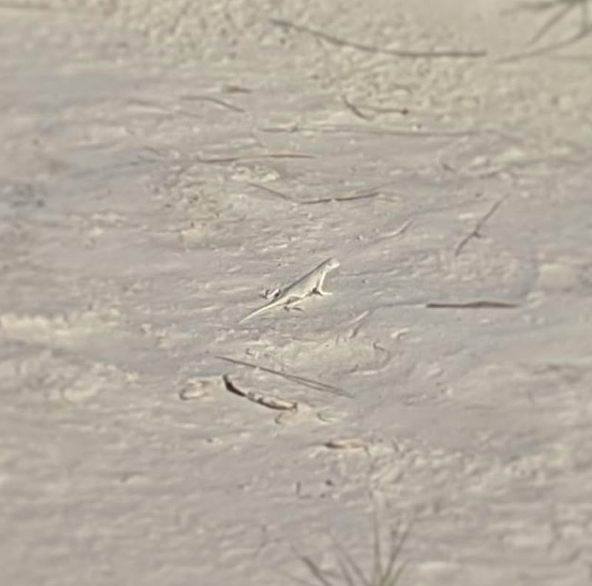
A lizard in white sands…the wildlife had to adapt to the extreme and unique conditions.
To be adaptable means you have to think outside the box. Find solutions where there are no obvious ones. And work with what you’ve got. Again, as dancers, we have to work first with the body we’ve got—it’s very rarely perfect. And then with the situation—when has a performance ever gone smoothly? (Very, very rarely). The stage is slippery, the lighting cues weren’t right, the sound system sucked…it goes on and on and on. But we work with what we’ve got, trust our bodies and profound knowledge of the choreography. And keep on learning. Every day our bodies feel different. We have to react to that, work with that.
When it comes to budget, again, things are rarely ideal in the dance world. We make costumes from scraps and refashion old costumes, make sets from objects we already have, make dances in living rooms, make use of what’s around us. And that’s what creativity is. Adaptability and creativity go hand in hand.
It’s common sense, but also necessity if we’re going to make it in this (dance) world.
And these two ideas complement each other: with curiosity, we can understand the underlying concepts, clarify intentions, and distill what is absolutely necessary and as dancers, what is safe movement for our bodies. With adaptability, we can apply that to any situation. In yoga, it’s understanding the underlying purpose and energy/activation of a pose (rather than imitating the shape), and therefore adapting it to our bodies. In performance, it’s prioritizing expression over circumstance, or using circumstance to magnify the expressive intent.

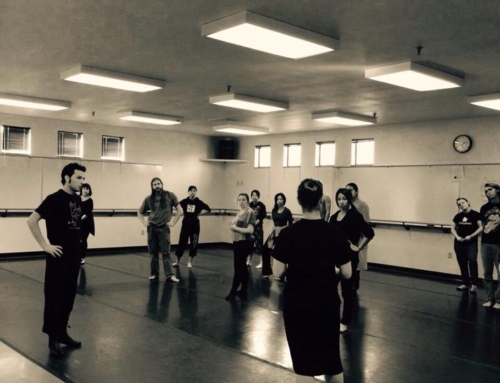
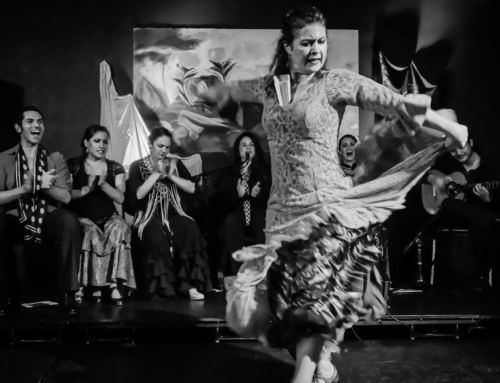
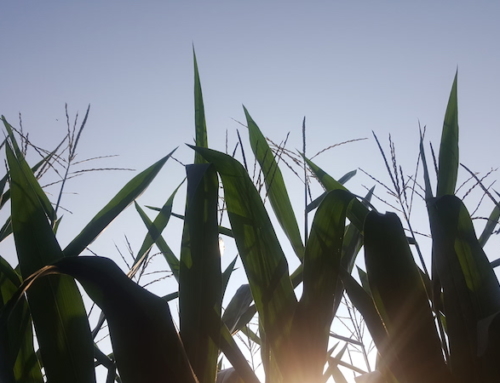
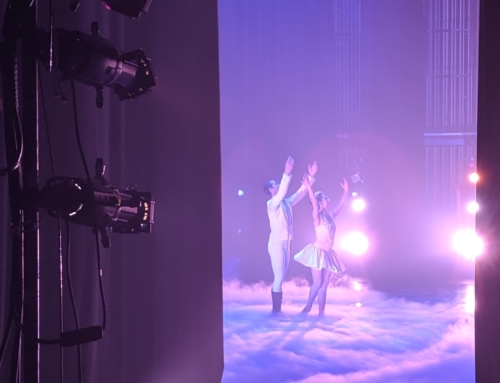
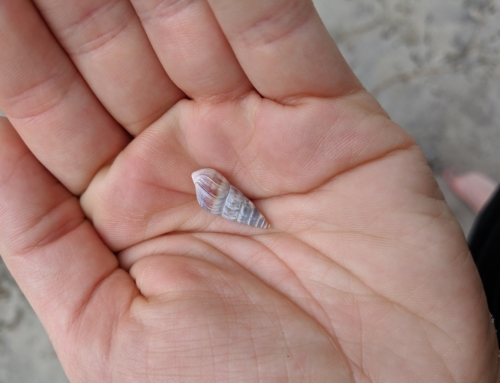
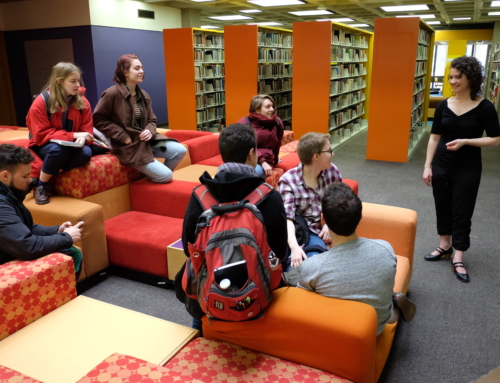
Leave A Comment